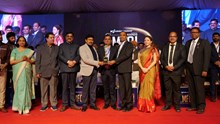
Kolkata, the City of Joy, is as celebrated for its cultural and literary richness as it is for its vibrant and diverse street food. Every corner of the city tells a story- not just through its heritage buildings or festivals, but through the irresistible aromas wafting from roadside stalls and home kitchens alike. The snacks of Kolkata are more than just quick bites; they’re woven into the fabric of everyday life, blending Bengali traditions with colonial influences and Mughlai flair.
From tangy, crunchy delights to warm, spiced treats, these snacks aren’t just eaten- they’re experienced. Here are seven must-try recipes that capture the true flavour and spirit of Kolkata.
1. Phuchka: Kolkata’s Iconic Tangy Delight
Phuchka, the pride of Kolkata’s street food scene, is a cousin of the pan-Indian golgappa but with its own distinct personality. Made from crisp puris filled with a spiced mix of mashed potatoes, black chana, chopped green chillies, and tamarind pulp, phuchka is all about bold flavour.
The star ingredient is the spicy tamarind water, enhanced with roasted cumin powder, black salt, and a squeeze of the famous Bengali gondhoraj lemon. It’s this citrusy twist that gives phuchka its unforgettable punch. While phuchkas are best enjoyed fresh from a roadside stall, making them at home involves preparing the puris, potato filling, and tangy water separately before assembling them just before eating.
2. Jhalmuri: The Perfect Crunchy Mix
If there’s a snack that captures the essence of Kolkata in one bite, it’s jhalmuri. This spicy puffed rice mix is Kolkata’s version of bhel puri, but drier, sharper, and intensely aromatic. The main ingredients include murmura (puffed rice), finely chopped onions, green chillies, boiled potatoes, roasted peanuts, and a drizzle of mustard oil.
The zing comes from freshly chopped coriander, lemon juice, and an assortment of spices like chaat masala and black salt. Served in a rolled-up newspaper cone, jhalmuri is light, easy to carry, and full of crunch, making it the go-to evening snack for commuters, students, and office-goers alike.
3. Ghugni: The Soul-Warming Spiced Pea Curry
Ghugni is a comforting, protein-rich snack made from dried yellow peas or white peas, slow-cooked with onions, tomatoes, ginger, garlic, and a medley of Bengali spices. It’s typically topped with chopped onions, green chillies, fresh coriander, and a squeeze of lemon. Ghugni is often eaten on its own or paired with puffed rice or even a hot luchi (fried flatbread).
What makes it truly Bengali is the addition of bhaja masala, a roasted spice mix that includes cumin, fennel, and dry red chilli. Simple yet satisfying, ghugni is a rainy day favourite in Bengali homes and also a staple at fairs and local festivals.
4. Kathi Roll: Kolkata’s On-the-Go Meal
Invented in the kitchens of Nizam’s in Kolkata’s New Market area, the kathi roll has become an international icon. This portable meal is essentially a flaky paratha wrapped around skewered meat, traditionally mutton or chicken along with sliced onions, chillies, and a dash of lime. Today, vegetarian versions made with paneer, soya, or spiced potatoes are just as popular.
The paratha is often pan-fried with a layer of egg for added richness. Once rolled and wrapped in paper, it becomes the perfect street-side bite for people on the move. The secret to a great kathi roll lies in the marination of the meat, which typically includes yogurt, ginger-garlic paste, garam masala, and lemon juice.
5. Telebhaja: Deep-Fried Goodness on a Rainy Day
Telebhaja literally means “fried in oil,” and that’s exactly what this beloved snack is. These fritters come in various forms, beguni (batter-fried eggplant slices), alur chop (mashed potato balls), mochar chop (banana blossom patties), and peyaji (onion fritters).
The batter is usually made from besan (gram flour), seasoned with salt, turmeric, and sometimes nigella seeds for added flavour. Crispy on the outside and soft inside, telebhaja is best enjoyed with puffed rice and green chillies, especially during Kolkata’s monsoon evenings. Though simple, it represents the Bengali love for comfort food that warms both the stomach and the soul.
6. Shingara: The Bengali Samosa
While samosas are famous across India, the Bengali version, called shingara, has a lighter and flakier crust and is usually smaller in size. Stuffed with a mildly spiced mix of potatoes, peas, and sometimes cauliflower, the shingara is deep-fried to a perfect golden crisp. Some variations also include peanuts or raisins for a touch of sweetness.
During winter, vegetable shingara becomes a popular tea-time snack, often accompanied by a steaming cup of cha (tea). Sweet versions also exist, filled with coconut or khoya, but the savoury ones remain the most popular, especially during family gatherings and roadside addas.
7. Radha Ballavi: Festive and Filling
Radha Ballavi is a deep-fried, stuffed lentil puri that is often served with a spicy aloo dum or cholar dal. Made with urad dal (split black gram) paste sautéed with ginger, asafoetida, and garam masala, the filling is packed with flavour. The dough is rolled out, stuffed with the dal mixture, and deep-fried till puffed and golden.
Though typically enjoyed during breakfast or special occasions, Radha Ballavi is also sold as a snack in many sweet shops across Kolkata. It’s rich, satisfying, and best served hot with a spoonful of pickle or a side of sabzi.
The snack culture of Kolkata is a testament to the city’s layered history and inclusive spirit. From the spicy crunch of phuchka to the comforting warmth of ghugni, every snack tells a story of tradition, migration, and everyday celebration. These recipes are more than just food; they’re an expression of a lifestyle that embraces flavour, community, and joy.
















